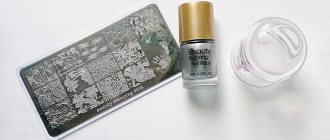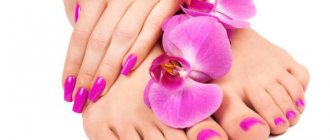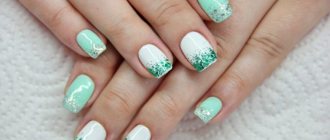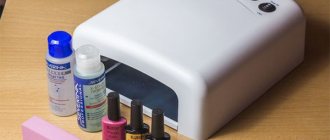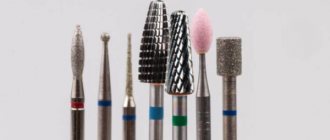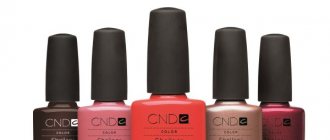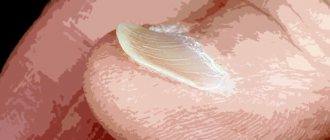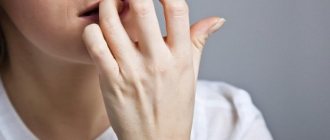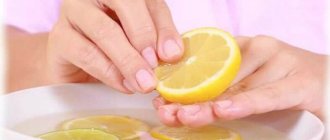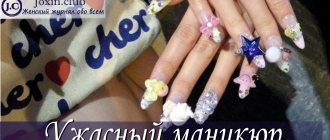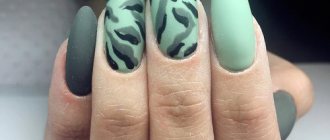You need to take care of your body not only for aesthetics, but also for health. A pedicure will preserve the beauty of your feet and help avoid various diseases. Now this is taught in courses, and pedicurists can be found in all beauty salons. If you still want to learn how to do it yourself, read our article.
In this article we will tell you:
- What is a pedicure?
- How long does a pedicure take?
- Types of pedicure Classic pedicure
- Dry pedicure
- Hardware pedicure
- European pedicure
- Medical pedicure
No matter how much I moisturize my feet, they constantly dry out and crack. What to do?
If the problem is such a global one, then it is a matter of a general lack of fluid in the body. Try to drink more liquid per day (at least 2 liters), and change light moisturizers to nourishing ones (CLARINS has an excellent product!). And here’s another little secret: every night, lubricating your feet with a thick layer of cream, put it on top socks - this will create a bath effect, and nutrients will penetrate deeper into the skin.
How will the procedure take place?
In the Moscow pedicure and manicure studio Kokoloko, procedures go unnoticed along with a pleasant pastime. When visiting us, you can combine business with pleasure (for example, leaving and watching your favorite movie or listening to music), detaching yourself from everyday obligations and fully resting your soul and body.
The stages of pedicure depend on the chosen method. Before starting work, the master:
- Examines the legs and treats them with an antiseptic;
- Softens the skin (if necessary);
- Treats required areas, including nails;
- Moisturizes and nourishes the skin with professional products.
At the end (at the visitor’s request), the nails are covered with a single-color varnish or an exclusive design is made.
How often should you get a pedicure?
And here again there is no single option. As a rule, specialists advise contacting them at least once every 3-4 weeks. But if you have soft and moisturized skin that does not require regular care, you don’t need to go that often. Visit a specialist as needed as soon as your feet begin to harden.

What are the dangers of rare visits to a manicurist and pedicurist?
It is difficult to determine the optimal number of manicure visits for everyone: it directly depends on the individual skin and characteristics of each person’s nails. For some, it is acceptable to do the procedure once a month, and for others, once every 10-14 days.
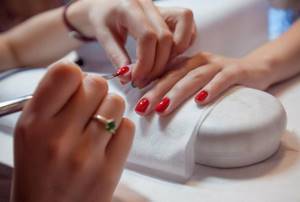
Masters recommend not to forget about your hands, because subsequently processing the cuticle will take much longer.
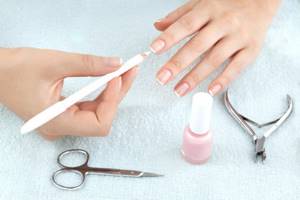
The coating, which has grown strongly, puts strong pressure on the free edge, so breaks appear - places that are most conducive to the growth of various bacteria.
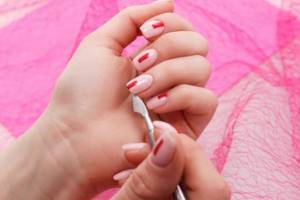
In addition, very long wearing of an unrenewed coating contributes to the thinning of the nail plate.
Is gel polish harmful? How long can you walk with it without taking it off?
Nails are damaged by improper care, careless removal of the coating or insufficient hygiene. And the varnish itself is not at all dangerous - of course, if it is applied to healthy nail plates. With serious wounds, bruises, or fungus, you need to go to a doctor, and not to a pedicurist. The quality of the coating, by the way, also affects the health of the nails. Therefore, we advise you to choose quality products, like varnish from ARTDECO.
The length of time you wear the coating depends on how quickly your nails grow. Some have to renew the varnish once every 2-3 weeks, others - once every 1.5-2 months. The belief that nails should “breathe” is a myth. Therefore, the need for correction is a purely aesthetic issue.
Read also: 7 things that a woman with taste will never skimp on

Why do you need to get pedicures all the time?
Often girls neglect the rules of periodic repeated pedicure corrections, since they do not consider it necessary to constantly care for the sensitive skin of their feet. The main reason is careful skin care. There are a large number of nerve endings and capillaries on the girl’s feet, so the area is very sensitive, which is why it needs to be carefully looked after. Since the cosmetic procedure includes a small massage, it helps to renew the functioning of the entire body, restore the activity of individual organs and increase the client’s immunity.
In addition, periodic and frequent relaxation technology helps to avoid stress and depression, which is associated with the complete restoration of the nervous system by exfoliating nerve points and pores on the feet, which increases their sensitivity.
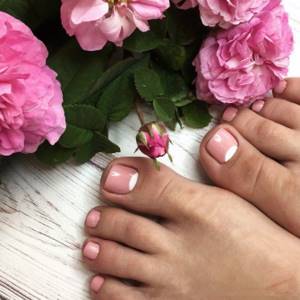
However, you can shorten the period of repeated manipulations if you take care of the delicate area yourself at home. To do this, you need to prevent the aggressive effects of external factors by following additional care recommendations:
- Use a pumice stone while showering to exfoliate rough skin.
- After washing, dry the fabric completely to prevent the formation of mildew associated with high humidity.
- At night, use moisturizer, spreading it evenly over your feet.
- Do caring procedures 1-2 times a week: masks, baths, oils, solutions - they help maintain the quality of the tissues.
- Avoid frequent wearing of cheap, uncomfortable shoes. It promotes friction of the epidermis and increased sweating, which clogs the pores on the legs, making them less sensitive.
- Drink plenty of clean water. It helps remove toxins from the body, preventing them from depositing in the limbs, which causes them to swell and slow metabolism.
To increase immunity, in the warm season it is recommended to walk a lot with bare feet on sand, stones, and grass. This has a positive effect on metabolism and normal blood circulation.
Maintaining the health and visual condition of the skin significantly increases a girl’s self-esteem; she feels more confident, since she can always take off her shoes, wear open shoes, without hiding certain parts of her body in front of others.
To choose the frequency of performing the technique, take into account the condition and health of your feet so that they always look neat and fresh.
Where do calluses and other foot skin problems come from?
There are two reasons: genetics and uncomfortable shoes. In the first case, corns and calluses appear due to the fact that the skin is thin and easily injured by any mechanical impact. And in the second, we advise you to always carefully choose new shoes or sneakers. And not just try them on and run to the checkout, but, at a minimum, walk back and forth around the store.

Pedicure is more than just nails
Many people believe that a pedicure is just covering the nails with decorative varnish. But the concept is much broader and includes several procedures:
- Removal of keratinized areas.
- Treatment of cracked heels.
- Removal of dry calluses, corns, core calluses.
- Correction of the shape of nail plates.
- Cuticle removal.
- Processing of side rollers.
- Treatment of ingrown nails.
- Foot massage.
- Treatment of nail and skin fungus.
- Nourishes and moisturizes the skin, strengthens nails.
Carry out the procedure in a salon with a specialist: this way you can be sure that corns, ingrown nails, and inflammation of the nail folds will no longer bother you. People with sensitive skin, brittle nails, diabetes, fungal infections of the skin and nails cannot do without professional help - only a podiatrist can perform a pedicure in this category.
Is it true that you shouldn’t use hard files often—this makes your skin even rougher?
Alas, yes. Harsh abrasives injure the skin - and because of this, it regenerates faster and, therefore, becomes rougher faster. Therefore, we advise you to choose peelings based on fruit acids rather than files to remove dead particles - here is an excellent example from L'ETOILE. And then be sure to moisturize your feet with cream - GREEN MAMA has a budget product with sage and linseed oil.

In general, home remedies and tools are sufficient for basic foot care. So you don’t have to spend money on the services of a specialist every few weeks to get a beautiful pedicure.
Types of pedicure and features
When performing caring procedures in the salon, take into account the features of technology, which determine the long-term preservation of the result.
Trim method
The most abrasive, rough way to restore and cleanse sensitive skin. For this, the cosmetologist uses exfoliating pumice stones and graters, which mechanically remove dead cells from the surface.
During the session, the cosmetologist steams rough skin in warm water, which makes the technique safer for the client and removes old epidermis faster.
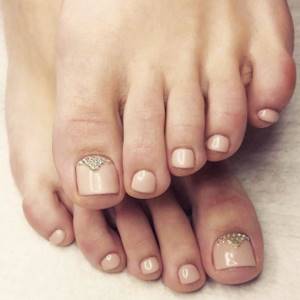
A girl can do the procedure herself at home, since it does not require special skills or materials to remove dead skin particles. However, when performing the technique in an untested salon, there is a risk of careless work with cutting tools that can damage the integrity of the tissue. And this causes infection or dirt to enter under the skin or into the blood.
Hardware technique
The technique is most often used for pedicures, as it is safe for the client and quickly polishes the surface. The technology involves the use of a special device, the action of which is aimed at gentle removal of old tissue by quickly rotating the selected nozzle.
Included with the equipment are several cutters with different notches, which the master uses to perform complex treatment of different areas of the feet. For delicate and denser fabrics, cutters with different abrasiveness levels are used; this parameter is adjusted by the master.
The technique is safer as it does not damage the integrity of the sensitive epidermis, which can lead to dirt/infection.
Cream pedicure
This method is not used often, but it is simple to do, so masters often resort to this method of treating feet to save time.
During work, the cosmetologist uses several compositions based on various acids. They are applied to the surface, facilitating external treatment aimed at eliminating keratinized particles of epithelial cells.
However, keep in mind that the method has contraindications - the presence of damage and open wounds on the surface of the skin, since aggressive components will cause discomfort to the client, which will reduce the effectiveness of the manipulations. It is recommended to do this method not often, so as not to damage the natural health of the girl’s legs.
To choose a technology that suits you, consult a cosmetologist. The standard option depends on the initial condition of the skin.
Medical pedicure training

There are few podiatrists with medical education and sufficient knowledge in the field of podology in Russia. Full training, including the basics of medicine and the narrow specialization of a podologist, is carried out in Canada and the USA.
Courses that promise to teach the work of a podiatrist and issue certificates will not help the master when meeting with Rospotrebnador - when he sees medical pedicure in the list of services, the inspector will definitely ask for a document on medical education, as well as a license to carry out medical activities.
What you need to know about salon or office inspections
It is advisable to attend such courses if you have a medical education, and podology will become an advanced training. If this is the case, then you don’t have to be afraid of meeting with the SES. There are several institutions in Russia that expand the knowledge of certified physicians who have decided to engage in medical pedicure:
Institute of Podology
The organization is located in Moscow and offers more than two dozen areas in the field of podology. The duration of the courses is from 1 day to 3 months. Upon completion of training, a certificate is issued.
The cost of training is from 5 to 35 thousand rubles. Please note that high-quality presentation of material and subsequent competent testing of knowledge cannot be cheap. A good specialist always sensibly assesses his qualifications.
First long-term care center
The training center is located in Yekaterinburg. Students are encouraged to acquire knowledge about correcting ingrown toenails using different techniques and materials. In addition, the company organizes seminars where listeners learn about foot diseases, the structure of the skin of the feet and other basic information.
The cost of training is from 4 to 15 thousand rubles.
Nadlen Nail

Beauty salon Nadlen Nail has its own school where medical pedicure courses are held. The company has 4 programs in its arsenal. Duration of training is from 1 to 3 days. Cost – from 15 to 37 thousand rubles.
Manicurist training - how to choose a school
How painful is the procedure?
Despite the fact that nozzles of different hardness are used during the procedure, the procedure is completely painless. Even a client with very delicate foot skin will not experience pain. At most, some may feel discomfort during the polishing stage, but this process will not cause pain.
A hardware pedicure is the best alternative for those who find a classic pedicure using cutting tools painful.
Choose a hood that suits you 100%
To catalog
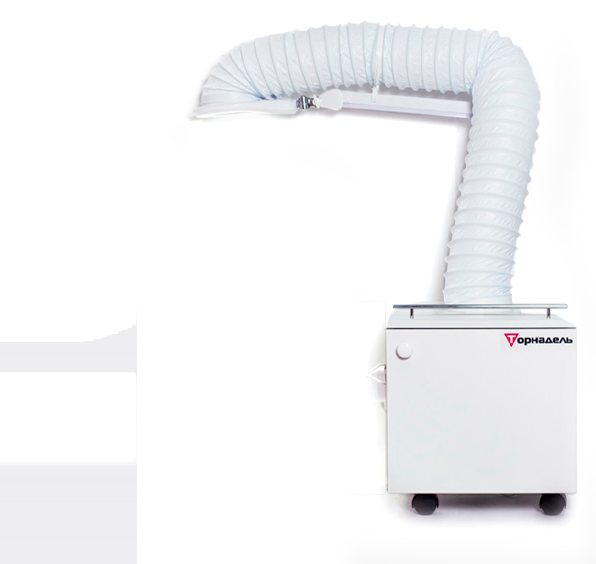
Advantages and disadvantages of the method
Medical pedicure using a device has advantages due to which it is widely popular among the female audience:
- polishing the feet completely removes the stratum corneum of the skin without steaming;
- safety and hygiene;
- a variety of attachments allows you to process even the most inaccessible areas;
- painlessness of the procedure;
- treatment of damaged areas of the feet and nails;
- virtually no contraindications;
- can be done for fungus.
Despite the positive aspects, a number of disadvantages of this procedure can be identified:
- relatively expensive service;
- to cure an advanced condition, you will have to undergo a whole course of such procedures;
- the wrong technique can lead to the opposite effect and damage your nails more.
For hardware pedicure services, contact only a highly qualified master with a medical education who knows everything about the procedure and will carry it out according to all standards.

